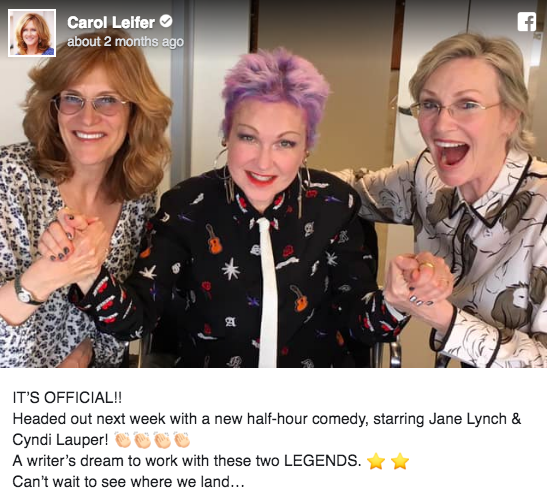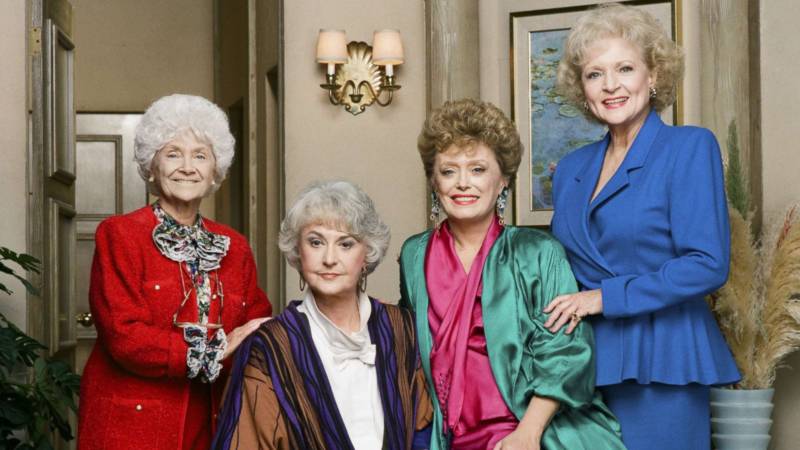Let’s face it: America needs this. Despite The Golden Girls carving out a space in light entertainment for funny senior ladies back in 1985, the barriers that Dorothy, Rose, Blanche and Sophia broke down went straight back up again after the final episode aired in 1992.
In the years since, the only TV series to truly embrace and hold focus on desirable, independent, sexually active older women is Grace and Frankie—and we had to wait around 23 years to get that. Elsewhere, Vicki Lawrence does the best with what she’s given on The Cool Kids, and Betty White flew the flag again in Hot in Cleveland for a few years, but the lack of representation (plus, where are the older women of color?) is pretty dire.
Back when The Golden Girls first aired, a show depicting a group of single female retirees discussing condoms, not wearing underwear and arguing hilariously over who was “the biggest slut” was revolutionary. Even Dorothy’s octogenarian mother was a frequent dater—something that had never been seen on TV before.
Its universal appeal, though, was rooted firmly in the ageless female archetypes that Dorothy, Rose, Blanche and Sophia represented (wisdom, naivety, sexuality and matriarchy), and the close friendships—and clashes—between them. They were the Carrie, Charlotte, Samantha and Miranda of the ’80s, and deserve much of the credit that Sex and the City later received for realistically portraying how women talk to each other in private.
The Golden Girls wasn’t the first TV series to prove that shows without male leads could still be smash hits—Charlie’s Angels had already done that in the ’70s—but it did help clear the path for more. That so many women-led shows (Desperate Housewives, Girlfriends, Girls, Designing Women, Hot In Cleveland and, yes, Sex and the City) have since structured themselves around four distinct leads speaks volumes about just how influential The Golden Girls was within the realms of representing women—albeit much younger ones.
And though the original series remains hugely entertaining for modern audiences, thanks to sharp comedy and sparkling chemistry, the world deserves an update. Not all of the show has held up all that well—and I don’t just mean the wicker furniture and pastel decor. Though groundbreaking at the time, the episodes that tackle social issues can be painful to get through. Moments like the ones in which Blanche struggles with her brother’s marriage to a man, or when Rose has to be told that AIDS is “not a bad person’s disease,” or when Blanche disapproves of her single daughter’s pregnancy are pretty cringe-inducing today.
Also, the way Americans grow old in 2019 is vastly different to how people in the ’80s did it—not least because we live longer now. In 1988, the life expectancy for the average American was 71; today it’s 81, and new generations are hanging onto their youth for longer. Truthfully, by today’s standards, Dorothy, Blanche, Sophia and Rose seem positively conventional—probably because sexagenarians simply didn’t have the freedom (or the botox) back then to look and act like Cyndi Lauper and Jane Lynch do now.



